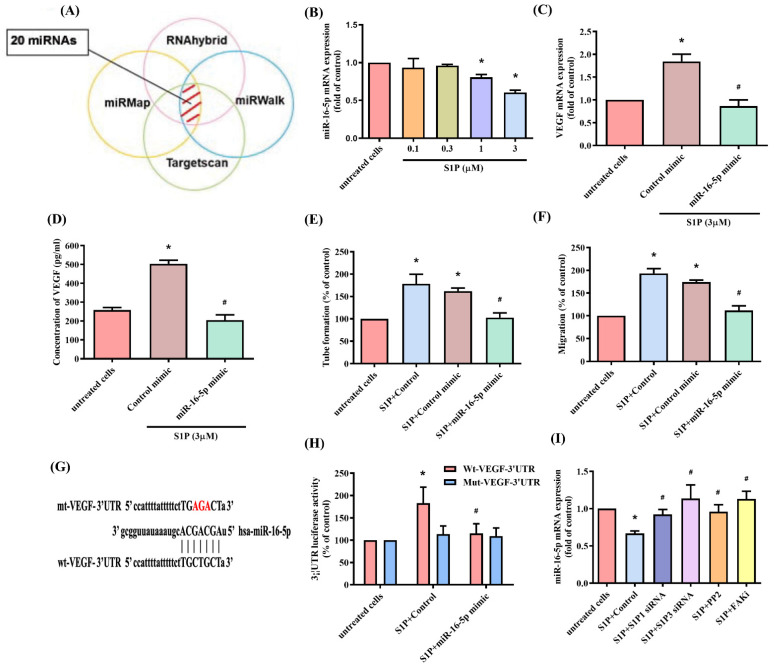Figure 5.
S1P facilitates VEGF synthesis and EPC angiogenesis via the inhibition of miR-16-5p. (A) The open-source software enabled identification of miRNAs that possibly disturb the transcription of VEGF. (B) Osteoblasts were transfected with S1P. MiR-16-5p expression was determined by the qPCR assay. (C,D) The osteoblasts were transfected with miR-16-5p mimic, then stimulated by S1P. Levels of VEGF were determined by qPCR and ELISA. (E,F) Collected CM was administered to the EPCs, and angiogenesis was quantified. (G) A schematic representation of human VEGF containing the miR-16-5p binding site. (H) The luciferase plasmids with, or without miR-16-5p mimic, were transfected into osteoblasts, before stimulating them with S1P. Measurement of luciferase activity revealed VEGF promoter activity. (I) Osteoblasts were transfected with S1P1 or S1P3 siRNA for 24 h, or pretreated with c-Src or FAK inhibitors for30 min, then stimulated with S1P for 24 h. MiR-16-5p expression was quantified by qPCR. Results are expressed as the mean ± S.D. (n = 3). * p < 0.05 versus the control; # p < 0.05 versus S1P alone.

